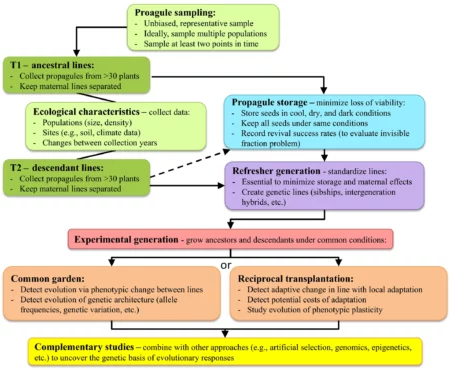We’ve referred to Project Baseline here a couple of times, but always somewhat desultorily. But I think that needs to end now that the project hit the big time with a shoutout in Gizmodo.
Based at the University of Minnesota Duluth, Project Baseline re-collects seeds multiple times from the same sites to see how populations change genetically and phenotypically.
In the Resurrection Approach, dormant ancestors are reared in a common garden with contemporary descendants. The Project Baseline collections are designed to maintain the genetic structure of populations to facilitate researchers utilizing the resurrection approach. Seeds are collected and stored separately by maternal plant from up to 200 individuals per population. After collection, seeds were cleaned and [conserved] at the NLGRP.
That phrase “reared in a common garden” is doing a lot of work, as the flowchart in a 2017 paper describing the Resurrection Approach shows.

Turns out we blogged about this too, almost 15 years ago, though there didn’t seem to be a Project Baseline yet at the time. I was maybe a bit hard on that press release, but more because of the misconceptions about genebanks that it revealed rather than the concept of re-collecting from the same site or population to monitor genetic change. That of course is extremely valuable, as our recent review of genetic erosion showed.